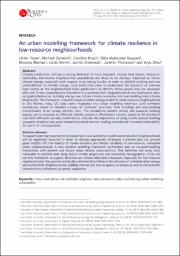
ATTENTION: The works hosted here are being migrated to a new repository that will consolidate resources, improve discoverability, and better show UTA's research impact on the global community. We will update authors as the migration progresses. Please see MavMatrix for more information.
Show simple item record
| dc.contributor.author | Passe, Ulrike | |
| dc.contributor.author | Dorneich, Michael | |
| dc.contributor.author | Krejci, Caroline | |
| dc.contributor.author | Koupaei, Diba Malekpour | |
| dc.contributor.author | Marmur, Breanna | |
| dc.contributor.author | Shenk, Linda | |
| dc.contributor.author | Stonewall, Jacklin | |
| dc.contributor.author | Thompson, Janette | |
| dc.contributor.author | Zhou, Yuyu | |
| dc.date.accessioned | 2021-05-25T19:21:47Z | |
| dc.date.available | 2021-05-25T19:21:47Z | |
| dc.date.issued | 2020-07-30 | |
| dc.identifier.issn | 2632-6655 | |
| dc.identifier.uri | http://hdl.handle.net/10106/29725 | |
| dc.description.abstract | **Please note that the full text is embargoed** ABSTRACT: Climate predictions indicate a strong likelihood of more frequent, intense heat events. Resource-vulnerable, low-income neighbourhood populations are likely to be strongly impacted by future climate change, especially with respect to an energy burden. In order to identify existing and new vulnerabilities to climate change, local authorities need to understand the dynamics of extreme heat events at the neighbourhood level, particularly to identify those people who are adversely affected. A new comprehensive framework is presented that integrates human and biophysical data: occupancy/behaviour, building energy use, future climate scenarios and near-building microclimate projections. The framework is used to create an urban energy model for a low-resource neighbourhood in Des Moines, Iowa, US. Data were integrated into urban modelling interface (umi) software simulations, based on detailed surveys of residents’ practices, their buildings and near-building microclimates (tree canopy effects, etc.). The simulations predict annual and seasonal building energy use in response to different climate scenarios. Preliminary results, based on 50 simulation runs with different variable combinations, indicate the importance of using locally derived building occupant schedules and point toward increased summer cooling demand and increased vulnerability for parts of the population. [© 2020 The Author(s). This is an open-access article distributed under the terms of the Creative Commons Attribution 4.0 International License (CC-BY 4.0), which permits unrestricted use, distribution, and reproduction in any medium, provided the original author and source are credited. See http://creativecommons.org/licenses/by/4.0/. This is a published version of an article published in "Buildings and Cities" on 20 July 2020. DOI: https://doi.org/10.5334/bc.17] | en_US |
| dc.language.iso | en_US | en_US |
| dc.publisher | Ubiquity Press | en_US |
| dc.relation.ispartofseries | Buildings & Cities;Volume 1, Issue 1 | |
| dc.subject | Cities | en_US |
| dc.subject | Heat stress | en_US |
| dc.subject | Microclimate | en_US |
| dc.subject | Neighbourhood | en_US |
| dc.subject | Occupancy data | en_US |
| dc.subject | Overheating | en_US |
| dc.subject | Urban modelling | en_US |
| dc.subject | Vulnerability | en_US |
| dc.title | An urban modelling framework for climate resilience in low-resource neighbourhoods | en_US |
| dc.type | Article | en_US |
| dc.rights.license | This is an open-access article distributed under the terms of the Creative Commons Attribution 4.0 International License (CC-BY 4.0), which permits unrestricted use, distribution, and reproduction in any medium, provided the original author and source are credited.(http://creativecommons.org/licenses/by/4.0/). | |
| dc.identifier.doi | 10.5334/bc.17 | |
Files in this item
- Name:
- Buildings_and_Cities_2020.pdf
- Size:
- 4.225Mb
- Format:
- PDF
- Description:
- PDF
This item appears in the following Collection(s)
Show simple item record


